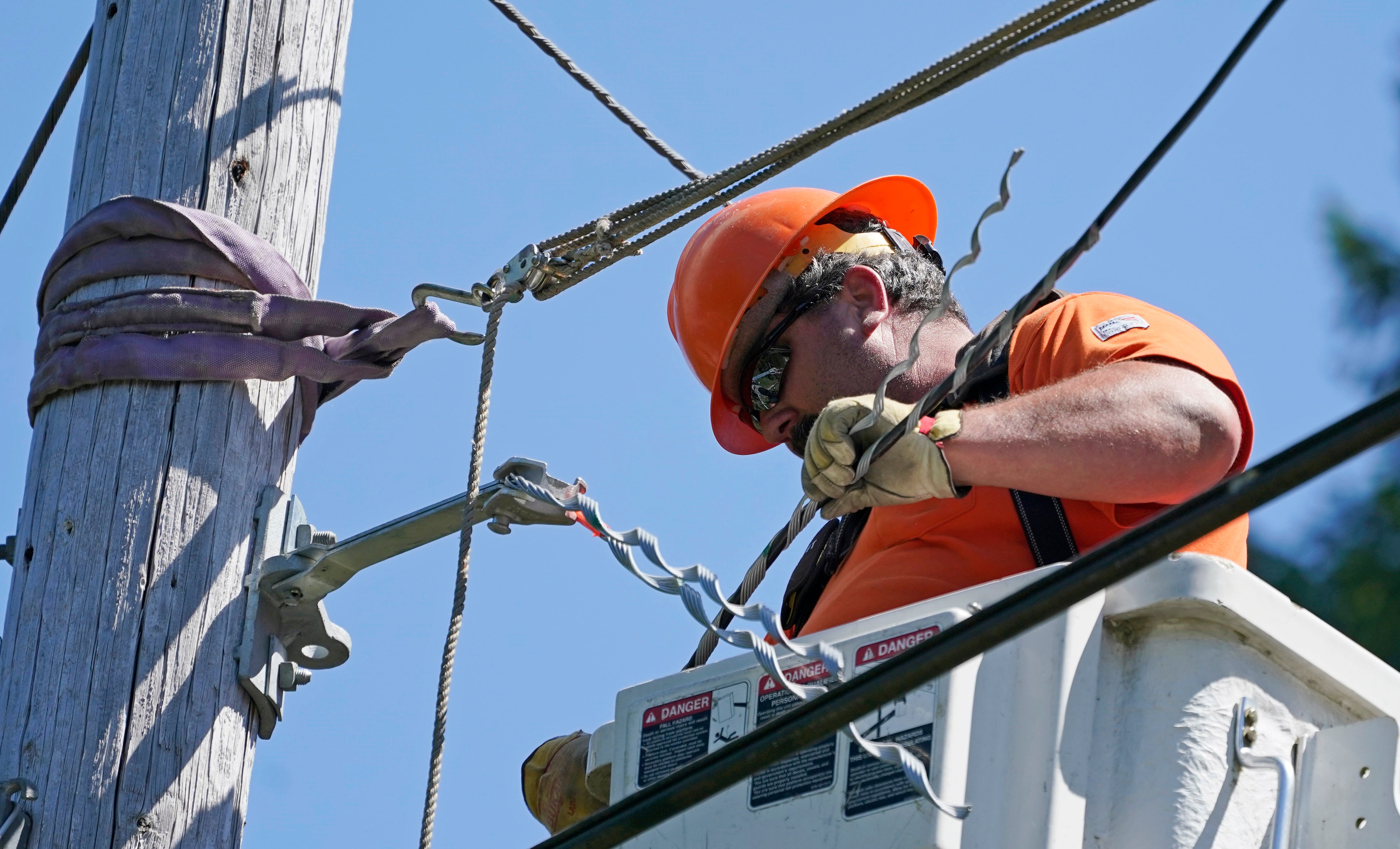LOCALIZE IT: Broadband grants flow to projects in 24 states

Your support helps us to tell the story
From reproductive rights to climate change to Big Tech, The Independent is on the ground when the story is developing. Whether it's investigating the financials of Elon Musk's pro-Trump PAC or producing our latest documentary, 'The A Word', which shines a light on the American women fighting for reproductive rights, we know how important it is to parse out the facts from the messaging.
At such a critical moment in US history, we need reporters on the ground. Your donation allows us to keep sending journalists to speak to both sides of the story.
The Independent is trusted by Americans across the entire political spectrum. And unlike many other quality news outlets, we choose not to lock Americans out of our reporting and analysis with paywalls. We believe quality journalism should be available to everyone, paid for by those who can afford it.
Your support makes all the difference.EDITORS/NEWS DIRECTORS:
The U.S. Department of Agriculture has announced $759 million in grants and loans to enable rural communities to access high-speed internet.
It’s part of the broader $65 billion push for high-speed connectivity from last year’s infrastructure law.
Agriculture Secretary Tom Vilsack and White House senior adviser Mitch Landrieu traveled to North Carolina to unveil the grants on Thursday. The funding includes $17.5 million for the state's AccessOn Networks to provide broadband service to 100 businesses, 76 farms and 22 educational facilities in two counties.
Find AP's story on the announcement here.
Here are the details on the projects and tips for localizing your coverage:
___
WHO GETS THE MONEY?
Under the initiative announced Thursday, there are 49 recipients in 24 states. The states included are:
ALASKA
ALABAMA
ARKANSAS
ARIZONA
CALIFORNIA
COLORADO
GEORGIA
IOWA
IDAHO
ILLINOIS
KANSAS
KENTUCKY
MICHIGAN
MINNESOTA
MISSISSIPPI
MISSOURI
NORTH CAROLINA
NEW MEXICO
OKLAHOMA
OREGON
SOUTH DAKOTA
TEXAS
WASHINGTON
WYOMING
— The resources are in many cases aimed at helping people on tribal lands, including the Cheyenne River Sioux Tribe, the Pawnee Nation of Oklahoma, the Navajo Nation and the Tohono O’odham Nation.
— A portion of the money also will go to projects in Puerto Rico, Guam and Palau.
___
WHAT ARE THE PROJECTS?
— A list of the 49 projects with additional context provided by USDA can be found here.
— The USDA news release announcing the grants is available here.
___
WHAT ARE SOME KEY QUESTIONS?
Reporting questions include when these projects will start, how they will affect the community and how they will assist in economic development.
— Ask your local utilities regulators what the process and timeline will look like to put the grant money into effect. How quickly will the target communities gain access to high-speed internet? When will construction start and how long will it take?
— What do your local economic development agencies or regional recruiters say are the types of industries or jobs that could be lured to your area once the high-speed internet is installed thanks to these loans and grants? What impact will high-speed internet have on the community?
— Ask your state commerce department or utilities regulators whether other pots of money from government or outside sources have been made available to expand broadband in underserved areas. Do they expect to receive any additional infrastructure grants or loans?
— What does your state’s farming association or local agriculture extension office say about the effect that high-speed internet will have in assisting farmers in expanding market access and improving efficiency with their operations?
— Ask your state lawmakers whether there are other counties, besides those included in the grant allocation, that will still be left without access to high-speed internet after the state receives this federal grant money. What is being done at the state level to expand access to more communities?
___
WHAT'S THE BACKGROUND?
The announcement and visit to North Carolina, a state with an open U.S. Senate seat, come as President Joe Biden and other top Democratic officials are trying to sell their achievements to voters before the Nov. 8 midterm elections. Landrieu, the infrastructure coordinator and former New Orleans mayor, told reporters on a Wednesday call that the Biden administration has already released $180 billion for various infrastructure projects.
The administration is specifically targeting support for small towns and farm communities, places that generally favor Republicans over Democrats.
Vilsack said that past trips show how broadband connectivity is starting to make a difference. While in Nevada this summer, he heard from people in the town of Lovelock who plan to use the improved internet to enhance their emergency responder services and tourism opportunities as well as help high school students who are earning college credit online.
Neither candidate in North Carolina’s U.S. Senate race — Democrat Cheri Beasley and Republican Ted Budd — was slated to appear at Thursday's events.
___
ADDITIONAL RESOURCES
— USDA Rural Development State Office list.
— National Association of Regulatory Utility Commissioners website.
— National Association of State Departments of Agriculture website.
___
Localize It is an occasional feature produced by The Associated Press for its customers’ use. Questions can be directed to Katie Oyan at koyan@ap.org.